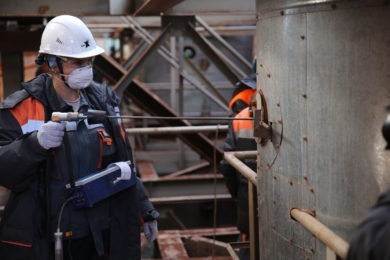Eurasian Resources Group is exploring the potential use of green hydrogen in its calcination kilns, as well as installing a portfolio of wind and solar power plants with an up to 6 GW capacity as part of its decarbonisation plans, according to Dr Alexander Machkevitch, Chairman of the Board of Directors.
During the plenary session of the Council for Foreign Affairs under the President of the Republic of Kazakhstan, titled, ‘Decarbonisation of the economy: Implementation of low-carbon technologies to identify environmental, social and governance settings (ESG),’ Dr Machkevitch, shared ERG’s ambitious plans to decarbonise its operations, including those with a focus on green hydrogen and renewable energy generation.
These efforts form an important part of the group’s ESG strategy and support Kazakhstan’s own national decarbonisation targets, it says.
Dr Machkevitch said: “Our environmental strategy includes around 40 projects across the group, embracing the development and application of new technological solutions such as the unique hybrid filter technology implemented at our plants together with thyssenkrupp. At ERG, we are exploring to replace fossil fuel oil in calcination kilns with green hydrogen, which can eliminate 100% of direct greenhouse gas emissions in this technological process. The group also plans to develop a portfolio of wind and solar electric power plants with total capacity of up to 6 GW.”
The group’s ESG 2030 goals include specific targets for reducing particulate emissions, waste and water use, with the three priorities being the reduction of particulate emissions by two-fold, the reduction of water consumption by a third, and the prevention of more than 2 Mt/y of CO2 emissions through the use of renewable energy sources. These activities will cost around $1.6 billion.
ERG’s decarbonisation commitments will significantly support national climate targets, it says. Kazakhstan plans to reduce national GHG emissions by 1.5% a year between 2022 and 2025, achieve a 15% reduction by 2030 and seek carbon neutrality in 2060.










